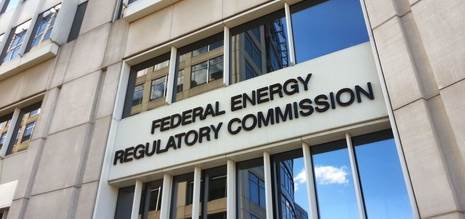by Justin Gundlach
Climate Law Fellow
New York City’s Economic Development Corporation (EDC) is planning to implement a Citywide Ferry Service by adding five new routes to those already run by the East River Ferry. EDC anticipates several benefits from the Citywide Ferry Service: it will link neighborhoods that currently have few transit options, ease transit congestion elsewhere, and provide an affordable way for commuters and tourists to access waterfront parks and developments. As required by the City Environmental Quality Review (CEQR) process, EDC drafted an Environmental Impact Statement (EIS) to identify both the effects of the ferries on the environment and the effects of the changing climate on the ferries and their landings. That EIS, for reasons described below, is a solid example of the sort of analysis that the White House Council on Environmental Quality (CEQ) envisioned when it issued its Final Guidance to Federal Agencies on the Consideration of Greenhouse Gas Emissions and the Effects of Climate Change in NEPA Reviews.
To access the EIS, go to this website and enter 15DME009Y (the Citywide Ferry Service’s serial number) into the “CEQR Number” field.
EDC’s EIS contains 18 chapters. Chapter 9, “Greenhouse Gas Emissions and Climate Change,” discusses expected emissions impacts from construction of new landings and operation of the new ferry routes. It quantifies those impacts and notes that non-transit alternatives would be more emissions-intensive—“each additional transit alternative for commuters and recreational users allows the City to maintain lower citywide on-road emissions.”
Chapter 9 also considers the Citywide Ferry Service in the appropriate context, as required by the Coastal Risk and Resiliency Act, namely the environment as the New York Panel on Climate Change (NPCC) anticipates it will be over the 30-year lifespan of the new landing infrastructure. More specifically, the EIS considers how well that infrastructure would withstand the circumstances of the NPCC’s “high” sea level rise (SLR) scenario—32 inches by 2050—and the more severe rainfalls, higher temperatures, and extreme coastal storm events anticipated in that time. After comparing the relevant heights, e.g., water levels during 100- and 500-year flood events in 2050, with the Service’s design elements, the EIS concludes that the Citywide Ferry Service “would allow ferry service to resume operations within hours following a storm event that interrupts other transit service, as soon as flood levels recede, thereby providing a resilient transit alternative.”
How does all this relate to CEQ’s Guidance? As Mike Burger and Jessica Wentz noted in a blog post last week, CEQ’s Guidance states that “a NEPA review should consider an action in the context of the future state of the environment,” and recognizes the importance of climate change adaptation and resilience. Furthermore, it also does not include any minimum numeric threshold below which an agency should ignore GHG emissions. Thus, even though the Citywide Ferry Service is not a federal action and so is not subject to NEPA, it is consistent with these directives. Put another way, EDC’s EIS is consistent with good EIS practice.
Further suggestions on how to incorporate the impacts of climate change into EISs for construction projects are set forth in a protocol prepared by the Sabin Center, available here.



